7 Tips For Preventing Pool Stains And Discolouration
Owning a pool is one of life’s great luxuries, offering endless hours of enjoyment and relaxation for you and your family. Whether you're hosting summer pool parties, enjoying a peaceful swim, or simply lounging by the water, a pool can enhance your lifestyle in countless ways. However, maintaining its pristine condition requires some effort, especially when it comes to preventing unsightly stains and discolouration that can mar its beauty. This comprehensive guide will walk you through the common causes of pool stains, including mineral deposits, organic debris, and chemical imbalances. You'll also learn about the different types of stains, such as metal, organic, and algae stains, and how each one affects your pool. Finally, we provide seven practical tips to keep your pool looking flawless, ensuring it remains a sparkling oasis for years to come.
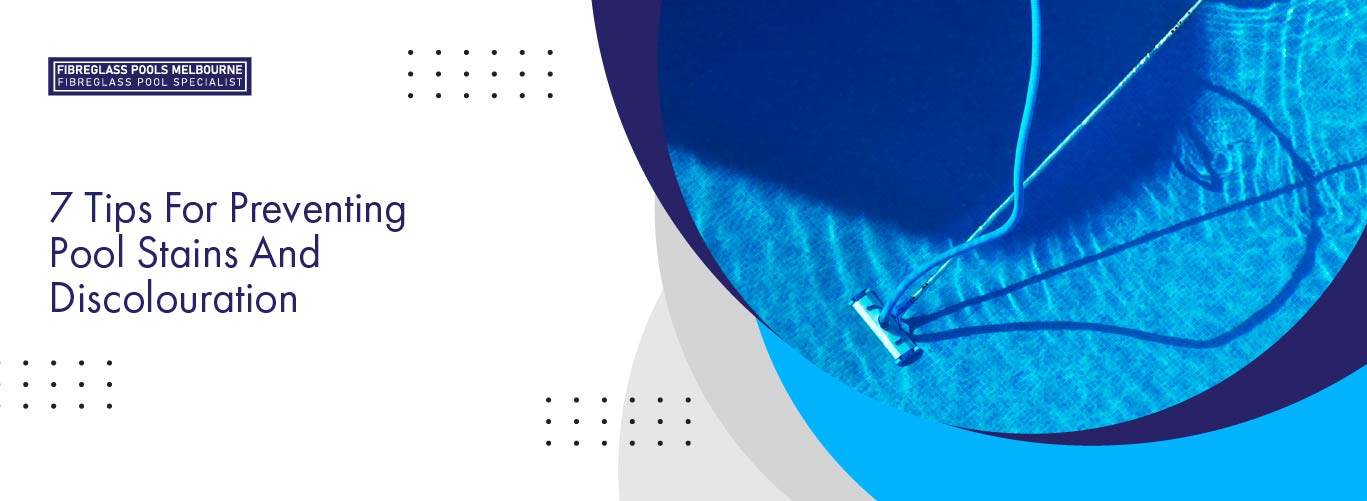
Introduction to Common Causes of Pool Stains and Discolouration
Pool stains can be both an eyesore and a sign of underlying maintenance issues. They often result from a combination of factors such as unbalanced water chemistry, organic debris, and metal contaminants. Unbalanced water chemistry can cause mineral deposits to form, while organic debris like leaves and algae can leave behind unsightly marks. Metal contaminants, often from corroded pool equipment or local water supply, can also lead to staining. Understanding these causes is the first step towards prevention, allowing pool owners to take proactive measures such as regular water testing, proper skimming, and routine cleaning to maintain a pristine and inviting pool environment.
Understanding the Types of Pool Stains and Their Sources
Before diving into prevention tips, it’s essential to identify the types of pool stains and their sources. Broadly, pool stains fall into three categories:
Metals
Metals such as copper, iron, and manganese can find their way into your pool water through various sources, including source water, pool equipment, or even certain algaecides used to treat algae. Once these metals enter the pool and are exposed to oxidising agents like chlorine, they can undergo oxidation. This chemical reaction can result in unsightly green, brown, black, or reddish stains on the surfaces of your pool, including the walls and floor. These stains not only detract from the aesthetic appeal of your pool but can also be difficult to remove, often requiring specialised treatments or professional assistance. Proper maintenance and regular testing of pool water can help in identifying and managing metal contamination, ensuring a clean and pleasant swimming environment.
Organic
Organic stains originate from leaves, berries, algae, or other plant materials. These stains are often green, brown, or blue-green and can be particularly stubborn if not promptly addressed. They typically occur when organic matter decays and releases pigments that soak into surfaces. If left untreated, these pigments can bond with the material, making the stains more difficult to remove over time. Regular cleaning and immediate attention to spills can help prevent these stains from setting in and becoming a persistent problem.
Chemical
Chemical stains usually result from improper use of pool chemicals, such as chlorine or shock treatments. When these chemicals are used incorrectly or in excess, they can react with the materials in the pool. Over time, this can lead to fading and discolouration of the pool liner or plaster, affecting both the appearance and longevity of the pool surface. It’s important to follow proper guidelines for chemical usage to maintain the pool’s aesthetic and structural integrity.
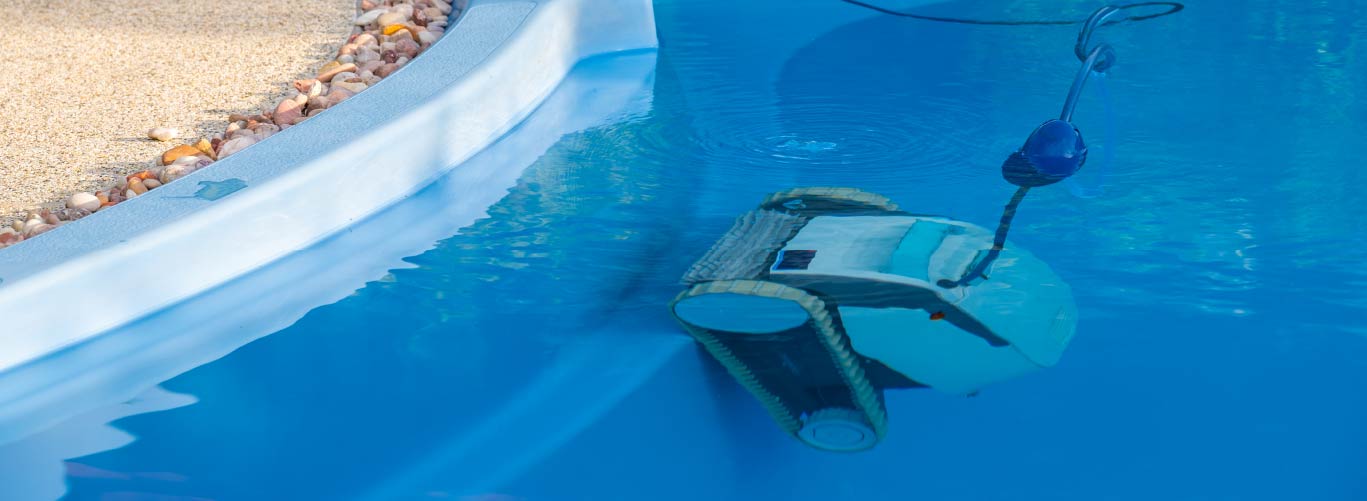
7 Practical Tips for Preventing Pool Stains and Discolouration
Now that we’ve covered the basics, let’s dive deeper and explore seven effective strategies for keeping your pool free from stains and discolouration. These methods will help you maintain a pristine, crystal-clear pool, ensuring a more enjoyable and aesthetically pleasing swimming experience. From regular maintenance routines to specific treatment techniques, we’ll guide you through each step to keep your pool looking its best.
1. Maintaining Proper Water Chemistry
One of the most critical aspects of pool maintenance is ensuring balanced water chemistry. Regularly test your pool water for pH, alkalinity, and calcium hardness. Aim to keep the pH between 7.2 and 7.6, total alkalinity between 80-120 ppm, and calcium hardness between 200-400 ppm. Balanced water chemistry prevents metal oxidation and reduces the likelihood of organic stains.
2. Regular Brushing and Vacuuming
Routine brushing and vacuuming are essential for removing debris before it has a chance to cause stains. Brush the walls, floor, and steps of your pool at least once a week and vacuum regularly to keep your pool surfaces clean.
3. Using a Stain Prevention Product
There are various stain prevention products available that can help keep metals and minerals suspended in the water, preventing them from settling on pool surfaces. Products like sequestrants or metal control agents can be added to your pool water every few weeks as a preventative measure.
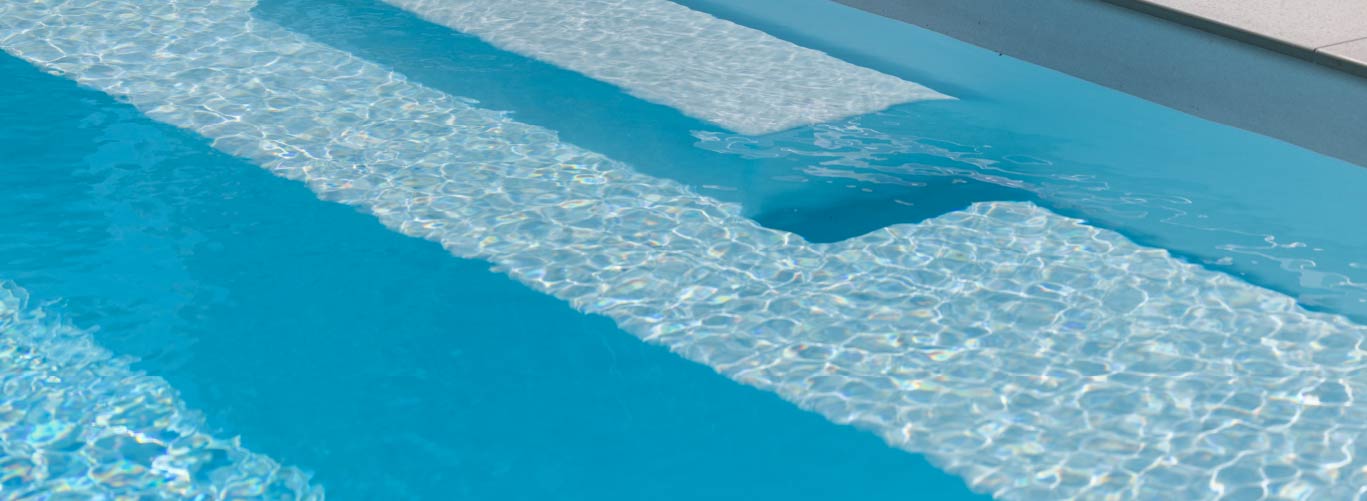
4. Routine Professional Inspections
Hiring a professional to inspect your pool equipment and water quality periodically can save you from potential headaches down the line. Professionals can spot early signs of staining and recommend appropriate treatments before the problem becomes severe.
5. Addressing Metals and Minerals in Water
If your source water contains high levels of metals or minerals, consider using a pre-filter when filling or topping up your pool. Additionally, using a water softener can help reduce hardness and prevent staining.
6. Proper Landscaping and Drainage Planning
Consider the impact of your landscaping on your pool. Trees and plants can shed leaves and organic material into the water, increasing the risk of stains. Plan your landscaping to minimise debris, and ensure proper drainage to prevent runoff from entering your pool.
7. Timely Cleaning of Pool Surfaces and Equipment
Regularly clean your pool surfaces and equipment, including skimmers, filters, and pump baskets. Promptly remove any debris that accumulates to prevent organic stains and ensure optimal pool performance.
Staying proactive in pool maintenance is key to preventing stains and discolouration. Regularly checking and balancing the water’s pH levels, brushing the pool walls, and using quality pool covers are just a few steps that can make a big difference. By following these seven comprehensive tips, which include proper filtration, timely chemical treatments, and consistent cleaning schedules, you can enjoy a crystal-clear pool that remains a beautiful centrepiece of your backyard, providing endless enjoyment for family and friends.
7 Tips For Preventing Pool Stains And Discolouration
Owning a pool is one of life’s great luxuries, offering endless hours of enjoyment and relaxation for you and your family. Whether you're hosting summer pool parties, enjoying a peaceful swim, or simply lounging by the water, a pool can enhance your lifestyle in countless ways. However, maintaining its pristine condition requires some effort, especially when it comes to preventing unsightly stains and discolouration that can mar its beauty. This comprehensive guide will walk you through the common causes of pool stains, including mineral deposits, organic debris, and chemical imbalances. You'll also learn about the different types of stains, such as metal, organic, and algae stains, and how each one affects your pool. Finally, we provide seven practical tips to keep your pool looking flawless, ensuring it remains a sparkling oasis for years to come.

Introduction to Common Causes of Pool Stains and Discolouration
Pool stains can be both an eyesore and a sign of underlying maintenance issues. They often result from a combination of factors such as unbalanced water chemistry, organic debris, and metal contaminants. Unbalanced water chemistry can cause mineral deposits to form, while organic debris like leaves and algae can leave behind unsightly marks. Metal contaminants, often from corroded pool equipment or local water supply, can also lead to staining. Understanding these causes is the first step towards prevention, allowing pool owners to take proactive measures such as regular water testing, proper skimming, and routine cleaning to maintain a pristine and inviting pool environment.
Understanding the Types of Pool Stains and Their Sources
Before diving into prevention tips, it’s essential to identify the types of pool stains and their sources. Broadly, pool stains fall into three categories:
Metals
Metals such as copper, iron, and manganese can find their way into your pool water through various sources, including source water, pool equipment, or even certain algaecides used to treat algae. Once these metals enter the pool and are exposed to oxidising agents like chlorine, they can undergo oxidation. This chemical reaction can result in unsightly green, brown, black, or reddish stains on the surfaces of your pool, including the walls and floor. These stains not only detract from the aesthetic appeal of your pool but can also be difficult to remove, often requiring specialised treatments or professional assistance. Proper maintenance and regular testing of pool water can help in identifying and managing metal contamination, ensuring a clean and pleasant swimming environment.
Organic
Organic stains originate from leaves, berries, algae, or other plant materials. These stains are often green, brown, or blue-green and can be particularly stubborn if not promptly addressed. They typically occur when organic matter decays and releases pigments that soak into surfaces. If left untreated, these pigments can bond with the material, making the stains more difficult to remove over time. Regular cleaning and immediate attention to spills can help prevent these stains from setting in and becoming a persistent problem.
Chemical
Chemical stains usually result from improper use of pool chemicals, such as chlorine or shock treatments. When these chemicals are used incorrectly or in excess, they can react with the materials in the pool. Over time, this can lead to fading and discolouration of the pool liner or plaster, affecting both the appearance and longevity of the pool surface. It’s important to follow proper guidelines for chemical usage to maintain the pool’s aesthetic and structural integrity.
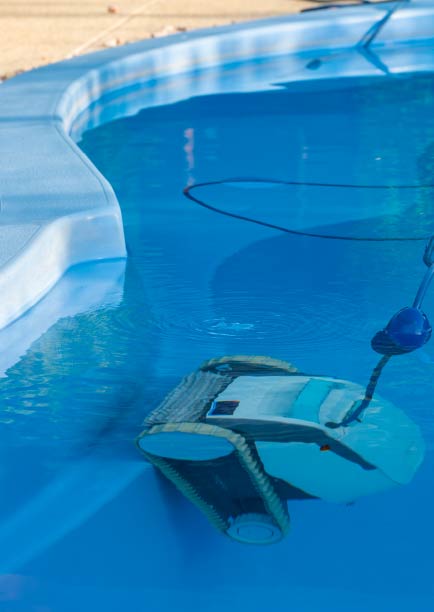
7 Practical Tips for Preventing Pool Stains and Discolouration
Now that we’ve covered the basics, let’s dive deeper and explore seven effective strategies for keeping your pool free from stains and discolouration. These methods will help you maintain a pristine, crystal-clear pool, ensuring a more enjoyable and aesthetically pleasing swimming experience. From regular maintenance routines to specific treatment techniques, we’ll guide you through each step to keep your pool looking its best.
1. Maintaining Proper Water Chemistry
One of the most critical aspects of pool maintenance is ensuring balanced water chemistry. Regularly test your pool water for pH, alkalinity, and calcium hardness. Aim to keep the pH between 7.2 and 7.6, total alkalinity between 80-120 ppm, and calcium hardness between 200-400 ppm. Balanced water chemistry prevents metal oxidation and reduces the likelihood of organic stains.
2. Regular Brushing and Vacuuming
Routine brushing and vacuuming are essential for removing debris before it has a chance to cause stains. Brush the walls, floor, and steps of your pool at least once a week and vacuum regularly to keep your pool surfaces clean.
3. Using a Stain Prevention Product
There are various stain prevention products available that can help keep metals and minerals suspended in the water, preventing them from settling on pool surfaces. Products like sequestrants or metal control agents can be added to your pool water every few weeks as a preventative measure.
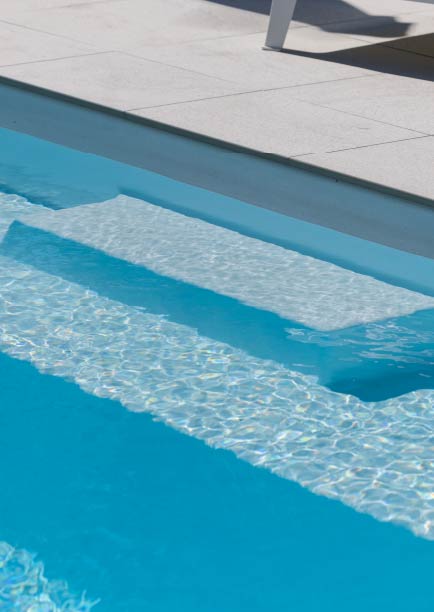
4. Routine Professional Inspections
Hiring a professional to inspect your pool equipment and water quality periodically can save you from potential headaches down the line. Professionals can spot early signs of staining and recommend appropriate treatments before the problem becomes severe.
5. Addressing Metals and Minerals in Water
If your source water contains high levels of metals or minerals, consider using a pre-filter when filling or topping up your pool. Additionally, using a water softener can help reduce hardness and prevent staining.
6. Proper Landscaping and Drainage Planning
Consider the impact of your landscaping on your pool. Trees and plants can shed leaves and organic material into the water, increasing the risk of stains. Plan your landscaping to minimise debris, and ensure proper drainage to prevent runoff from entering your pool.
7. Timely Cleaning of Pool Surfaces and Equipment
Regularly clean your pool surfaces and equipment, including skimmers, filters, and pump baskets. Promptly remove any debris that accumulates to prevent organic stains and ensure optimal pool performance.
Staying proactive in pool maintenance is key to preventing stains and discolouration. Regularly checking and balancing the water’s pH levels, brushing the pool walls, and using quality pool covers are just a few steps that can make a big difference. By following these seven comprehensive tips, which include proper filtration, timely chemical treatments, and consistent cleaning schedules, you can enjoy a crystal-clear pool that remains a beautiful centrepiece of your backyard, providing endless enjoyment for family and friends.


